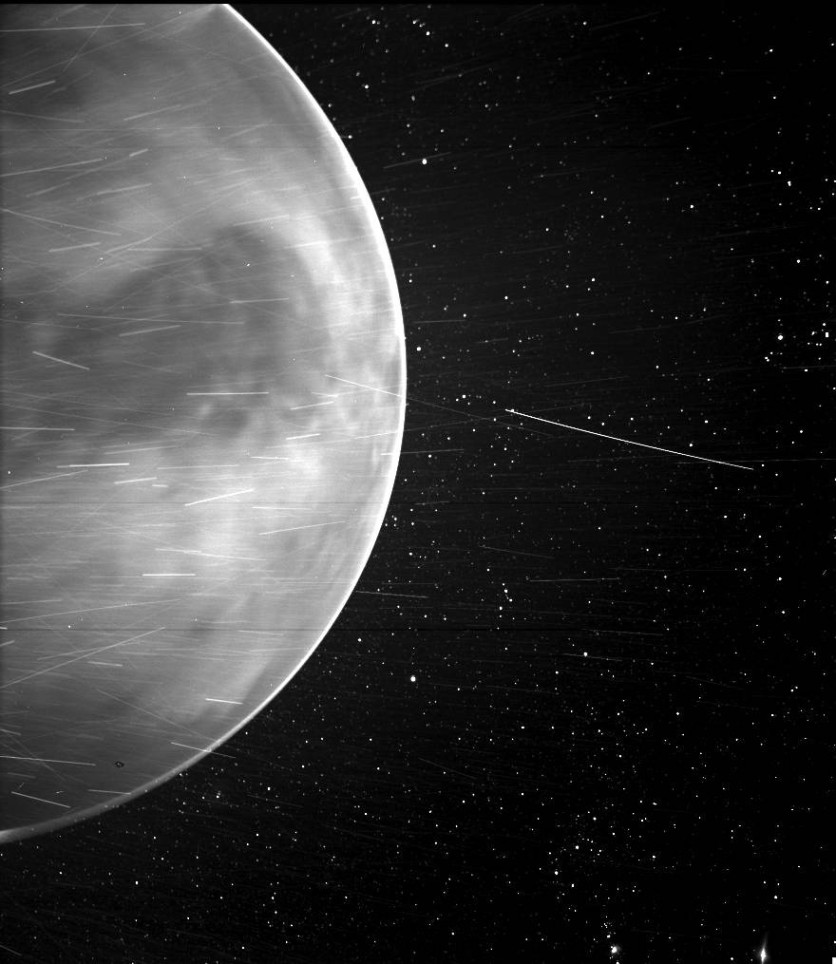
The National Aeronautics and Space Administration (NASA) has finally released the stunning image captured by the space agency's Parker Solar Probe, and a spacecraft sent to study our host star.
Solar Probe Captures Venus
In a blog post published by NASA, the space agency explained the importance of the unique planet in our solar system, saying that it's vital for making sure the solar probe can fly further to the Sun and capture some details that our scientists are yet to uncover.
This happens through Venus' gravity, which helps bend the solar probe's orbit.
According to the astronomers behind the project, the solar probe will have to flyby Venus a total of seven times during the entire course of its seven-year mission to assist the spacecraft in studying solar winds and their dynamics closer to their source.
But besides that, the mission could also help scientists here on Earth learn more about Venus.
Indeed, the solar probe was able to capture a stunning image of the planet during its flyby in June 2020, showing off a new detail that scientists weren't aware of yet before.
Venus and Its Nightglow
Based on the blog post, the image was captured during Venus' third gravity assist that happened on July 11, 2020, which allowed the solar probe and the onboard Wide-Field Imager for Solar Probe or WISPR to capture a photo of the planet's nightside.
The image was taken from 7,693 miles away.
According to The Insider, the image that the spacecraft beamed back to Earth included something they weren't expecting: a bright halo-like rim around the edge of the planet that could be what is known as nightglow.
This phenomenon happens when the oxygen atoms that exist in the atmosphere recombine with the molecules on the nightside of the planet.
The result gives the planet a stunning glow.
Moreover, the space probe could also capture the dark feature on the planet, which is the Aphrodite Terra and the highest region on Venus' surface.
The reason why it's darker than its surroundings is that it is cooler than its surroundings.
Is WISPR More Capable Than What's Previously Believed?
"WISPR is tailored and tested for visible light observations," said Angelos Vourlidas as per the blog post, the WISPR project scientist from the John Hopkins Applied Physics Laboratory. "We expected to see clouds, but the camera peered right through to the surface."
Furthermore, an astrophysicist and WISPR team member, Brian Wood, said that the onboard camera of the Parker Solar Probe was able to capture the thermal emission from the planet's surface, so it's rather similar to the images that have been captured by the Akatsuki spacecraft "at near-infrared wavelengths."
The unforeseen image captured by WISPR has the team measuring whether the onboard camera is sensitive to infrared light, and if it is, it would be able to provide the scientists with more opportunity to study the dust around our Sun and the inner solar system.
However, if not, the image might have captured Venus' signature features and might have revealed a previously unknown "window" through the Venusian atmosphere.
This article is published in Tech Times
Written by Nhx Tingson
ⓒ 2025 TECHTIMES.com All rights reserved. Do not reproduce without permission.




